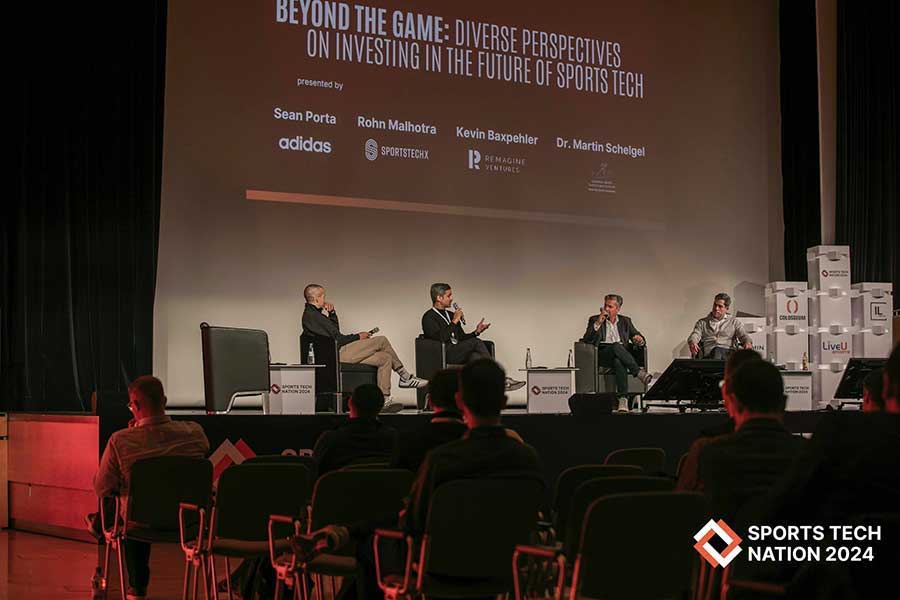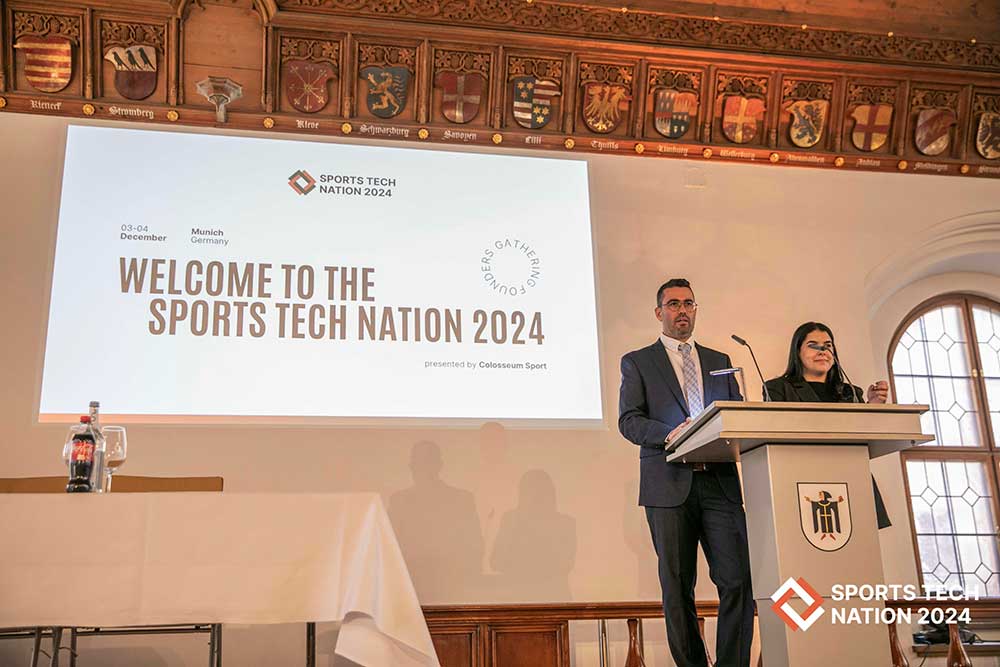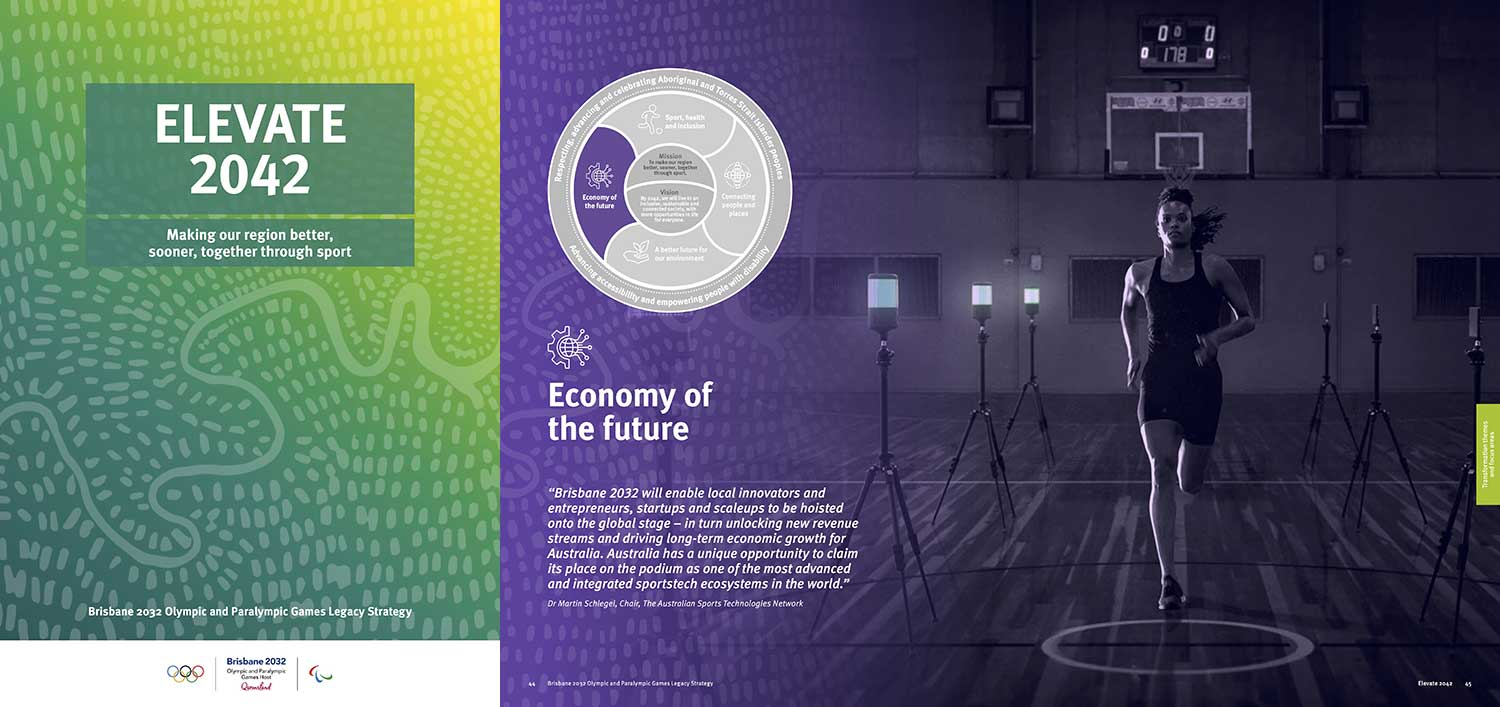Connecting the dots amongst global clusters of sportstech innovation

When Jerry Engel, Emeritus Professor for Entrepreneurship at UC Berkeley’s Haas School of Business published his second edition of ‘Clusters of Innovation’, the COVID-19 pandemic had just disrupted the world. Engel had never planned to develop a framework for understanding innovation ecosystems; however, after years of experience being immersed in Silicon Valley as a practitioner, investor and educator, he was influenced to better understand how innovation ecosystems are formed. Engel selected the sportstech sector in Australia, along with program activities led by ASTN, as a global case study on how innovation clusters take shape. Engel’s research highlights the critical role of government policy and incentives to provide critical support for these clusters, as well as the essential role that ASTN plays in activating and facilitating government involvement.
What started as a fragmented industry in a country with a strong sports pedigree in 2012 has developed into one of the top six sportstech clusters globally over the past decade. Alongside the United States, the United Kingdom, Europe with focus on the DACH region (Germany, Austria and Switzerland) and the FRES region (France and Spain), Israel and the megalopolis of multiple cities and special administrative regions in South East Asia.
Australia maintains a leading position in terms of startup talent, technology development and new business model concepts. And the ecosystem we are building is little more than three quarters on its journey, as it typically takes about 15 years for a globally recognised startup ecosystem to fully mature1. As we approach the Brisbane 2032 Olympic and Paralympic Games, we will see even greater investment and deployment of advanced technologies, creating limitless opportunities for growth for Australian sportstech businesses.
As Australia’s leading industry body for sports technology and innovation, ASTN is passionate about building global connections, and linking its network with these global hot spots to facilitate new opportunities and innovation. Through our ongoing efforts to ‘connect the dots’, we are paving the way for our members to scale in Australia, as well as on the global stage.
Country-specific expertise in sportstech
The US draws its position from the single largest sports business market2 with a combined revenue of almost $US50 billion for the National Football League (NFL), Major League Baseball (MLB), the National Basketball Association (NBA), and the National Hockey League (NHL), based on 2024 figures3. This is further strengthened by the innovative influence of Silicon Valley.
The UK has developed its credibility on the back of the English Premier League (EPL), government investment into club sports and local physical activities as well as the link between the financial and predictive markets, i.e. sports betting. In Europe, both Germany and Spain have developed expertise around their professional football (soccer) leagues, the Bundesliga and La Liga respectively. Germany’s ties to leading manufacturing industries have maintained a focus on materials, equipment and hardware. Spain on the other hand, with its two powerhouse clubs of the Spanish League, namely Real Madrid and FC Barcelona, has paid specific attention to sports business aspects, such as fan engagement and member relationships due to their significant globally dispersed followings.
Israel is often referred to as the ‘startup nation’4, and has shown successful knowledge transfer from other sectors, like security, video and artificial intelligence into sports applications5.
Taiwan, with its well-established supply chains and manufacturing capabilities, coupled with its expertise in electronics and information and communication technology provides a strong foundation to advance its sports technology sector. The Taiwanese government has recognised the potential of integrating technology with sports to drive economic growth and enhance public health, with the National Science and Technology Council (NSTC) establishing the Sports and Technology Action Plan (2022-2026), aiming to transform Taiwan's sports landscape through scientific and technological advancements, and establisoss Taiwan as a global leader and the first international stronghold for sports science and sports technology in the Asia-Pacific region6.

Australia’s sportstech growth: driven by startup innovation and government investment
Australia is similar to Israel in that it punches well above its weight in terms of producing startup talent, technology development and validating new business models. Shortly after ASTN was founded in 2010, the sportstech sector was estimated to contribute about A$250 million to the Australian Gross Domestic Product (GDP) and represented about 2,500 jobs in 20127. By 2024, ASTN’s Sports Innovation Report revealed the sector is now worth A$4.69 billion per annum, employing 14,906 people8.
Initially, the growth of ASTN has largely been driven by the Victorian State Government’s investment into sporting infrastructure9 and major events10. Targeted investment into the startup community through the Victorian Government’s startup agency, LaunchVic11, and export development initiatives via GlobalVic, its trade and investment agency have also contributed to growth.
Programs by both agencies have been widely regarded as an important enabler for the sportstech sector. LaunchVic funding of ASTN has been directed at early-stage startups, whereas GlobalVic and Austrade funding assists export-ready and export-growth companies to access markets through trade missions and business matching with China, Europe, India, Japan, the UK and the USA. Furthermore, the Victorian Government’s invitational programs alongside events have been instrumental for many stakeholders such as ASTN in building global connections by bringing successful global sportstech vendors, league officials and high-performance sports’ administrators to Australia and Melbourne.
Based on these learnings, ASTN continues to engage other State Governments to formally extend its programs across Australia’s Eastern Seaboard. In particular, ASTN's engagement in Queensland has grown significantly by delievring activities under ActiveKIT, Advanced Queensland and the Queensland Investment Corporation (QIC) Venture Capital Development Fund program. Queensland engagements now also extend to NRL's Magic Round and activities collaborating with the City of Gold Coast. In the past year we also expanded our presence into Western Australia and have started activities in South Australia. A key advantage of achieving national program delivery will be the ability to effectively deliver ASTN programs across multiple states, in both online and hybrid formats.
Investments into sports infrastructure and major events has propelled growth
On a national scale, investments in sports infrastructure and major events have been a key driver of growth. These investments have been especially important following Australia’s successful hosting of several large international events including Sydney 2000 Olympics, 2006 and 2018 Commonwealth Games and the 2023 FIFA World Cup . Each of these investments served not only as a catalyst for investments in infrastructure, strengthened the visitor economy or provided a platform for promoting the countries awareness abroad but also fuels the broader sports sector.

The Brisbane 2032 Olympic and Paralympic Games in Queensland13 is expected to continue to boost investment, as well as extend to the deployment of advanced technologies. Accordingly, sportstech has been identified as part of the ‘Economy of the Future’ in the Games Legacy ‘Elevate 2042’.14
Thriving as a sector: leveraging on-and-off field technology and cultivating a ‘sharing culture’
ASTN’s initial success was built by concentrating on the on-the-field human performance technologies derived from sports and universities. However, ASTN’s roadmap outlined in the ‘Born Global – Thrive Local’ Playbook in 2014, highlights that off-the-field technologies are equally if not more important in terms of providing opportunities for business growth, knowledge diffusion and scalability15. ASTN recognised that despite enormous credibility, Australian sports science had created on-the-field, as an ecosystem, the network had to embrace an open sharing culture and actively engage with adjacent industries, like healthtech, fintech and the wider information and communication technologies in order to thrive and continue its growth trajectory.
This understanding of building a ‘sharing culture’ has resulted in creating the next generation of open innovation collaborative programs by bringing together sporting organisations, corporate and startups16. However, some Australian subsidiaries of multinational corporations lack the bandwidth and resources locally to engage fully into the development and collaboration with startups.
Beyond sponsorships, corporate engagement with sportstech is lacking
Despite Australia being globally recognised a strong research performer, a very recent strategic examination outlined how R&D investment by large enterprises in Australia is declining17. Whilst sportstech in Australia matches the size of fintech in terms of economic value add and number of startups, SME and larger businesses18, the fintech sector is benefiting from a vibrant engagement of the local banking sector. We continue to emphasise that the lack of corporate engagement with sportstech in Australia is falling short, especially as Australia is globally recognised as one of the leading innovation clusters in the world. In fact, Israel-based organisation, Sports Tech Nation states “Australian sportstech as one of the leading innovation ecosystems in the world with ASTN continuing to deliver some of the most advanced program activities in the industry.”19

Nevertheless, in true sense of the ‘Entrepreneurial State’, state governments across Australia have recognised the need to educate and support the development of local investor networks20. This approach aligns with ASTN’s observation, that in most cases, neither government, venture capital nor experts can pick the winners – rather, success is produced naturally from the ecosystem.
Fostering relationships with other clusters of innovation
Given that sports as a sector intersects with many adjacent industries, such as healthtech, cyber, infrastructure, media and entertainment as well as advanced manufacturing just to name a few, fostering relationships with other international clusters of innovation becomes paramount as obstacles continue to be at play domestically. Accordingly, the strong international connections that ASTN has developed over the years continue to be incredibly important in terms of providing access to global expertise, early-stage investment communities and overseas venture capital to fuel further growth and ensure long term success of specialised sportstech programs in Australia.
In today’s rapidly evolving landscape, Australia’s position as a leader in innovation and sportstech offers immense potential for growth. By continuing to ‘connect the dots’ and foster strong international networks, ASTN will continue to support its network through this next phase of growth to facilitate new opportunities, and continue to strengthen Australia’s reputation as one of the leading innovation ecosystems in the world.
1 Deloitte Access Economics. Productivity is not an accident: The Victorian Startup Ecosystem, p. 41 (2020)
2 https://howmuch.net/articles/sports-leagues-by-revenue
3 https://www.statista.com/outlook/amo/sports/united-states#revenue
4 Senor D., Singer S. (2009) Start-up nation: The story of Israel’s economic miracle. New York: Twelve.
5 Dubinsky Y (2020) Exploring the intersections between the sport‐tech ecosystem, innovation, and diplomacy in Israel. https://link.springer.com/article/10.1057/s41254-020-00191-2
6 https://english.ey.gov.tw/News3/9E5540D592A5FECD/e3a6dbdd-a9e8-4195-92ba-c64c6b74bd58?utm_source=chatgpt.com
7 Australian Sports Technologies Network (ASTN) (2013) Industry Briefing Paper
8 https://www.astn.com.au/press-release/beyond-growth-australia-s-sportstech-sector-reaches-maturity-milestone
9 https://sport.vic.gov.au/our-work/infrastructure/major-infrastructure-projects/melbourne-park-redevelopment
10 https://www.visitvictoria.com/Events/Major-events
11 https://launchvic.org
12 https://www.fifa.com/womensworldcup/
13 https://www.olympic.org/news/ioc-session-endorses-new-future-hosts-approach-and-targeted-dialogue-with-brisbane-2032
14 https://q2032.au/plans/games-legacy
15 https://astn.com.au/pre-accelerator/
16 https://astn.com.au/masterclass/
17 Australian Government. Department of Industry, Science and Resources. Strategic Examination of Research and Development (2025). Retrieved from https://consult.industry.gov.au/strategic-examination-rd-discussion-paper
18 https://www.astn.com.au/press-release/new-report-reveals-australia-s-sportstech-sector-is-now-worth-a-4-25-billion
19 Opening remarks at Sports Tech Nation conference in Munich December 2024 by Oren Simanian, Colosseum
20 https://launchvic.org/programs/programs#investoreducation
